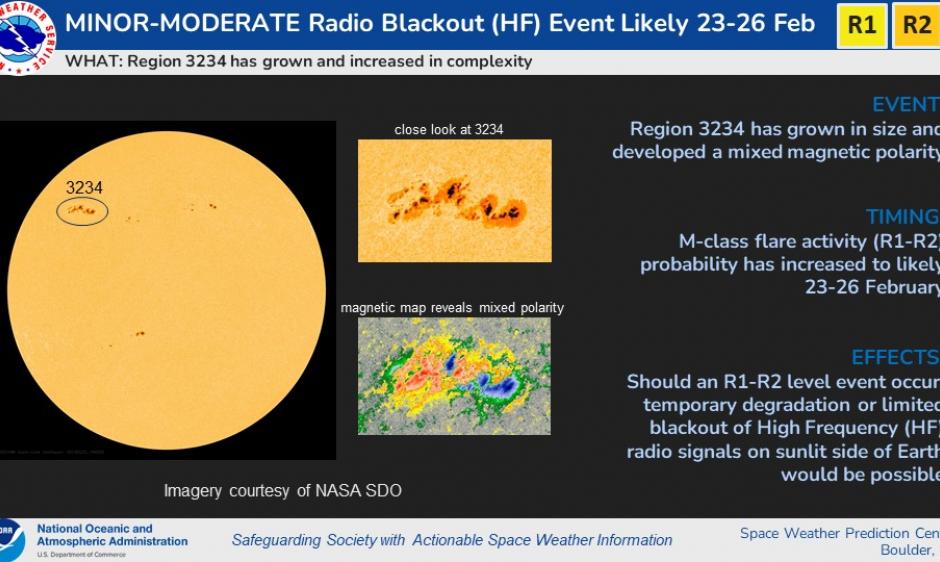
The likelihood of R1-R2 (Minor-Moderate HF Radio Blackout) events increased for 23-26 February, 2023. Region 3234 has grown in length and areal coverage. Additionally, the magnetic complexity increased as it developed a mixed magnetic configuration. Region 3234 already has an M-class flare history since rotating onto the visible solar disk, but now the probability of an R1-R2 level flare increased due to its continued development. Flare activity is measured by the NOAA GOES-16 satellite via the SUVI (Solar Ultraviolet Imager) and the EXIS (Extreme Ultraviolet and X-ray Irradiance Sensor). Keep visiting our website for the most current information, forecasts, and updates.